 The International Handbook of Psychopathic Disorders and the Law: Laws and Policies, Volume II By
The International Handbook of Psychopathic Disorders and the Law: Laws and Policies, Volume II By2007 | 575 Pages | ISBN: 0470066407 | PDF | 9 MB
Reflecting the work of an international panel of experts, the International Handbook on Psychopathic Disorders and the Law offers an in-depth and multidisciplinary look at key aspects of the development and etiology of psychopathic disorders, current methods of intervention, treatment and management, and how these disorders impact decision making in civil and criminal law. Content: Chapter 1 Civil Law: Structure and Procedures (pages 7-19): Grant H. MorrisChapter 2 Hospitalization and Civil Commitment in England and Wales (pages 21-34): Martin Zinkler and Stefan PriebeChapter 3 Hospitalization and Civil Commitment of Individuals with Psychopathic Disorders in Germany, Russia and the United States (pages 35-60): Elmar Habermeyer, Ulrike Rachvoll, Dr. Alan R. Felthous, Alexander O. Bukhanowsky and Roman GleyzerChapter 4 Should Psychopathy Qualify for Preventive Outpatient Commitment? (pages 61-73): Bruce J. Winick, Charles Lo Piccolo, Willy Anand and Lester HartswickChapter 5 The Clinician's Duty to Warn or Protect: In the United States, England, Canada, New Zealand, France and Spain (pages 75-94): Dr. Alan R. Felthous, Roy O'Shaughnessy, Jay Kuten, Irene Francois?Pursell and Juan MedranoChapter 6 Evaluating Parents in Child Custody and Abuse Cases and the Utility of Psychological Measures in Screening for Parental Psychopathy or Antisocial Personality (pages 95-112): Stephen B. Billick and Michael B. JacksonChapter 7 The Management of Fitness for Duty in the United States Military (pages 113-123): David M. Walker and James A. BourgeoisChapter 8 The Psychopath in the Workplace: Disability, Direct Threat and the ADA (pages 125-135): Lauren Wylonis and Robert SadoffChapter 9 Disability and Sociopathy (pages 137-154): Albert M. DrukteinisChapter 10 Personal Injury Litigation in the United States and India: Acquired Psychopathy (pages 155-162): Robert P. Granacher and Manish A. FozdarChapter 11 Criminal Law: Structures and Procedures (pages 163-176): Robert Lloyd GoldsteinChapter 12 Legal Competencies in Relation to Confession Evidence (pages 177-187): Gisli H. Gudjonsson and Thomas GrissoChapter 13 Competence to Stand Trial and Psychopathic Disorders: Legal and Clinical Perspectives from the USA (pages 189-200): J. Richard CicconeChapter 14 Criminal Forensic Evaluations in Germany (pages 201-209): Henning Sa?, Hans?Ludwig Krober and Dr. Alan R. FelthousChapter 15 Insanity in Austria: The Position of Psychopathy in Austrian Forensic Psychiatry (pages 211-227): Thomas Stompe, Patrick Frottier and Hans SchandaChapter 16 Psychopathic Disorders and the Criminal Law in Switzerland (pages 229-242): Marc Graf and Volker DittmannChapter 17 Insanity, Diminished Responsibility and Personality Disorder in England and Wales (pages 243-254): Don GrubinChapter 18 The Insanity Defense and Psychopathic Disorders in the United States and Australia (pages 255-274): David Greenberg and Dr. Alan R. FelthousChapter 19 Psychopathy, Diminished Capacity and Responsibility (pages 275-301): Mohan S. Nair and Robert WeinstockChapter 20 Noninsanity Psychological Evidence (pages 303-315): Ralph SlovenkoChapter 21 Criminal Sentencing: The Role of Mental Health Professionals with Special Consideration for Psychopathic Disorders (pages 317-327): Dr. Alan R. FelthousChapter 22 Psychopathy and the Death Penalty in the United States (pages 329-342): James K. WolfsonChapter 23 The Death Penalty: A Psychiatrist's View from Europe (pages 343-359): John GunnChapter 24 The Role of Hospitalization in the Management of Prisoners with Psychopathic Disorders (pages 361-372): Norbert KonradChapter 25 The Psychopath in Prison (pages 373-391): Julio Arboleda?FlorezChapter 26 Patuxent Institution: A Unique Approach to Psychiatry and the Law (pages 393-406): James R. ColdrenChapter 27 The Treatment of Psychopathic Patients in the Netherlands (pages 407-428): Daan van Beek and Uta KrogerChapter 28 Probation and Parole: History, Policy Change and Mental Health in England and Wales (pages 429-444): Anthony GoodmanChapter 29 Ethical Considerations Involving Psychopathic Disorders (pages 445-459): Henry C. Weinstein, Eraka Bath, Elizabeth B. Ford, Manuel Lopez?Leon and Scott M. SolowayChapter 30 Malingering and Psychopathic Disorders (pages 461-471): Philip J. Resnick and Steven J. ZuchowskiChapter 31 Culture and Psychopathy in the Forensic Context (pages 473-488): Wen?Shing Tseng, Ezra Griffith, Pedro Ruiz and Alec BuchananChapter 32 The Economics of Crime Rooted in Psychopathic Disorders: Aspects of Law, Public Policy, Rehabilitation and Faith?Based Programs (pages 489-504): Jean H. Hollenshead, Frederick R. Parker, Harvey W. Rubin and Timothy M. ShaughnessyChapter 33 Training and Education for Mental Health Professionals (pages 505-517): Rusty Reeves, Richard Rosner, Dominique Bourget and John GunnChapter 34 The Importance of Quality in Future Directions (pages 519-529): Dr. Alan R. Felthous and Henning Sa?
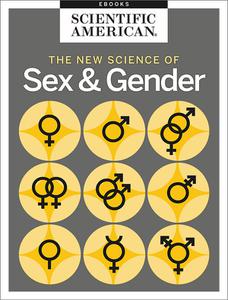


![S.T.A.L.K.E.R. 2 / STALKER 2: Heart of Chornobyl - Ultimate Edition (2024) [+UPDATE 23.12.2024 - v1.1.3] ElAmigos / Polska wersja językowa](https://i.postimg.cc/Zqd8RWGY/UZG8PBE.jpg)




































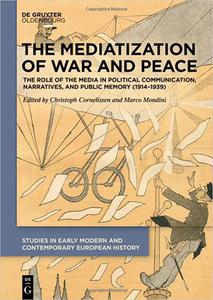

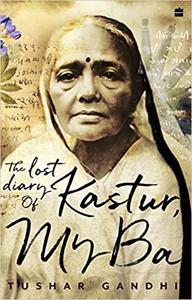
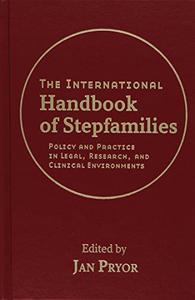



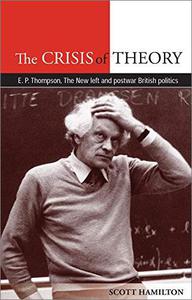







![David Gilmour - Luck and Strange (2024) [FLAC]](https://i.imgur.com/everaBc.jpeg)
![Męskie Granie Orkiestra - Męskie Granie 2024 (2024) [FLAC]](https://i.imgur.com/FAyOxrM.jpeg)
![The Rolling Stones - Hackney Diamonds (2023) [FLAC]](https://i.imgur.com/wCkyyUN.jpg)
![Lady Gaga - Harlequin (2024) [FLAC]](https://i.imgur.com/dcgIA8D.jpeg)
![Natalia Kukulska - Dobrostan (2024) [FLAC]](https://i.imgur.com/bdljG3O.jpeg)
![Kaśka Sochacka - Ta druga (2024) [FLAC]](https://i.imgur.com/hORQKvn.jpeg)
![Kuba Sienkiewicz - Pani Bóg (2024) [FLAC]](https://i.imgur.com/qijCx8Z.jpeg)
![Lanberry - Heca (2024) [FLAC]](https://i.imgur.com/8P7QfeR.jpeg)
![Sara James - PLAYHOUSE (2024) [FLAC]](https://i.imgur.com/m4f8OKg.jpeg)
![Grzegorz Hyży - EPILOG (2024) [FLAC]](https://i.imgur.com/8DA2sBr.jpeg)
![Myslovitz - WIECZORAMI CHŁOPCY WYCHODZĄ NA ULICE (2024) [FLAC]](https://i.imgur.com/l9mMtIG.jpeg)
![Krzysztof Zalewski - ZGŁOWY (2024) [FLAC]](https://i.imgur.com/vh48RAc.jpeg)
![Krzysztof Cugowski - Wiek to tylko liczba (2024) [FLAC]](https://i.imgur.com/SBzgqe2.jpeg)
![Nosowska - Kasia i Błażej (2024) [FLAC]](https://i.imgur.com/mObvVXQ.jpeg)
![sanah - Pianinkowe Kaprysy (2024) [FLAC]](https://i.imgur.com/pVjjPAa.jpeg)
![Kwiat Jabłoni - Pokaz slajdów (2023) [FLAC]](https://i.imgur.com/diERHfZ.jpg)
![Robert Cichy - Spacer po Warszawie (2024) [FLAC]](https://i.imgur.com/ixleU9o.jpeg)
![Viki Gabor - Terminal 3 (2024) [FLAC]](https://i.imgur.com/Q1KCnDs.jpeg)
![Sanah - Kaprysy (2024) [FLAC]](https://i.imgur.com/71OZm4h.jpeg)
![Męskie Granie Orkiestra - Męskie Granie 2023 (2023) [FLAC]](https://i.imgur.com/U4YHo8d.jpg)




